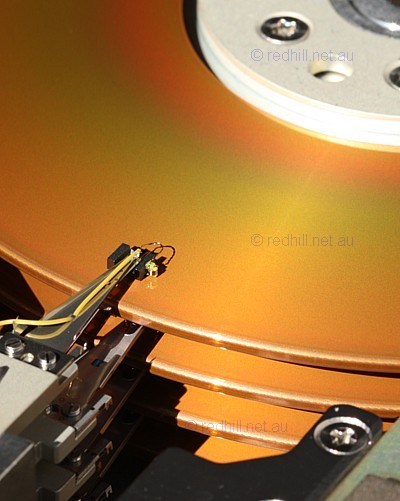
NEC D5146H (42MB, 1987).
Update your bookmark
This is the old site. You probably want the new site.
The new site has all the same information but adds more drives, updated text, and much better pictures of many models.
- Western Digital Caviar AA
- Samsung Spinpoint V9100
- Samsung Spinpoint V1020
- Seagate U10
- Seagate Barracuda ATA 2
- Western Digital Caviar BA
- Seagate Barracuda ATA III
This old version of the Red Hill guide hasn't been updated for about ten years. The new version can be found here.
An interesting year, 2001. Most of the majors released new lines late in 2000, and most of these were bigger, quieter, cheaper, ran cooler, had higher internal data rates — and yet, because of higher seek times, were measurably slower than their predecessors. It was high time for a return to performance as the number-one goal in drive design. Our prediction was that 2001 would see just that,from at least one of the majors, possibly all of them. A 10,000 RPM IDE drive was overdue. Traditionally Seagate had been first to push the speed barrier up another notch, but Quantum, Maxtor, and even Western Digital were considered possibilities. Alas, not one of them stepped up to the plate.

Western Digital Caviar WD400BB Family
In a better year, drives like these might have escaped without much notice. In a year when new models were nearly always slower than their predecessors, the 20GB/platter 7200 RPM Caviars was refreshingly traditional: a new model that was unequivocally faster than the old model it replaced — and, indeed, faster than almost anything else in IDE. Only the elderly but still formidable IBM Deskstar 75GXP was in the same performance class.
Released late in 2000, the Caviar BB was an instant success here. It was remarkably quiet — quieter than many a 5400 RPM drive — cool to touch, and noticeably faster than most of the competition. It is quite possibly the most reliable 7200 RPM drive we have seen so far — bar the faultless Samsung P40 — and it quickly become our favourite 7200.
As always, the "demand" entry in the chart below shows the popularity of each drive with one star indicating a bare handful of units, five stars a really major mover. The lifetime of many modern drives is so short that they only span one part of the market and there is little change in the demand mix over their career. Not so with a long-lived model like the 400BB: when these first arrived the 20GB size was the major seller, then the 30, and finally, some months later again, the flagship 40GB unit.
Early in the year, while we were waiting on new releases from Seagate and IBM, we could see little reason to carry any other 7200 RPM model. After the release of the disappointing Barracuda ATA IV and the competitive but hard to find Deskstar 60GXP, only the new Samsung SpinPoint P40 gave us reason to consider other drives. It was a sad commentary on the lack of progress the hard drive industry was making by this time that 12 months on from introduction the WD400BB remaind a top performer. In years gone by, no normal drive could last more than a couple of months before it was eclipsed by newer, faster models.
(Agate Technology, the major Australian distributor for both Seagate and IBM, went out of business in mid-year 2001. Seagate already had alternative arrangements in place, but IBM drives remained difficult to source for a long time afterwards. We could perhaps have tried to track them down a little harder but, given our satisfaction with the 400BB, we felt no great need to.)
| Performance | 1.44 | Reliability | AA1 |
| Data rate | 400 Mbit/sec | Spin rate | 7200 RPM |
| Seek time | 8.9ms | Buffer | 2MB |
| Platter capacity | 20GB | Interface | ATA-100 |
| WD200BB | 10.01GB | 1 GMR head | ** |
| WD200BB | 20.02GB | 2 GMR heads | *** |
| WD300BB | 30.02GB | 3 GMR heads | **** |
| WD400BB | 40.02GB | 4 GMR heads | **** |
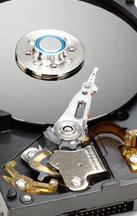
Western Digital Protege
Another late-2000 release, the Protege was Western Digital's second attempt at a budget line, and a notable improvement on the unlovely Spartan that they started with. Like the Spartan, the Protege was astonishingly light, less than half the weight of a standard drive; lighter even that the old aluminium-bodied Quantums of sub-500MB days. There was no harm in this we guessed, but habit being the powerful influence that it is, we prefered the solid feeling of a more traditional drive. (Until we got used to them, the then-new plastic packaged Pentium III Coppermine and Athlon XP CPUs had the same effect.)
Like Seagate but unlike Quantum, WD chose to stick with the industry-standard 5400 RPM spindle speed for their cheaper line of drives but, just as Seagate did with the U Series drives, WD let the seek time blow out. The result was big, reasonably cheap drive that was competent enough but distinctly on the sluggish side. There is no particular harm in that if the price is low enough to justify it, but in practice the Protege came in at a few dollars over the price of the noticeably slower Seagate U-10 (which was fair enough) but about $10 dearer than the vastly faster Samsung SpinPoint V2040 too. Close, but no cigar. The Protege needed to be cheaper than that if it was to sell in decent numbers. After the original samples, we only bought Proteges to cover out of stocks in faster (and quite often cheaper) drives like the Samsungs.
| Performance | 1.19 | Reliability | AA1 |
| Data rate | 320 Mbit/sec | Spin rate | 5400 RPM |
| Seek time | 12.1ms | Buffer | 2MB |
| Platter capacity | 20GB | Interface | ATA-100 |
| WD100EB | 10GB | 1 GMR head | |
| WD200EB | 20GB | 2 GMR heads | ** |
| WD300EB | 30GB | 3 GMR heads | |
| WD400EB | 40GB | 4 GMR heads | * |
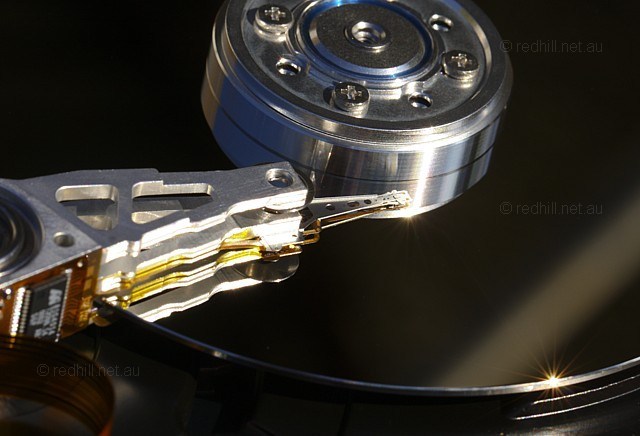
2001 Drive of the Year
Samsung SpinPoint V2040
A great double for Samsung: their excellent SpinPoint V1020 was our 2000 Drive of the Year selection.
From about the turn of the century onwards, we came to rely on Samsung for our mainstream bread and butter drives much as we used to rely on Seagate drives back in the middle nineties, and the Spinpoints came to account for a similar proportion of our sales mix (roughly two-thirds).
Just like the V1020, the Samsung V2040 was quiet, cheap, and fast. Best of all it maintained Samsung's spotless reliability record. We sold many, many hundreds of Samsung drives around this time, and not one had an in-service failure. This was an incredible record. Where it was normal to regard a drive model with an average failure rate of a handful per hundred units as good to excellent, our Samsungs just didn't fail at all for several years. At the time, I wrote "We could have four or five go faulty tommorow and they would still be the most reliable drive we have ever sold."
(A few years later on we finally saw some fail in service, but still just a tiny handful, and even those usually failed gracefully, developing one or two bad sectors and giving us time to get the data off safely.)
When the V2040 was introduced in the closing months of 2000, Samsung claimed a 9.0ms seek time for it, slightly up on the outstanding 8.5ms nominal seek of the V1020. As so often in recent times, we wondered if this meant that the manufacturer had joined the growing trend to lower-performance hard drives. Not completely: on the testbench, the V2040 was a tiny bit slower than its smaller and older brother, but the difference was small enough to be unnoticeable in practice. Not quite the outstanding performer that the V1020 was, it was still superior to just about anything else in a 5400 RPM drive. As we had come to expect from Samsung drives by then, they were cheap, cool, very quiet, and utterly reliable. They gave way to the bigger but otherwise very similar 30GB/platter V30 Series in the late southern winter.
| Performance | 1.33 | Reliability | AAA |
| Data rate | 343 Mbit/sec | Spin rate | 5400 RPM |
| Seek time | 8.8ms | Buffer | 2MB |
| Platter capacity | 20GB | Interface | ATA-66/100 |
| SV1021 | 10.2GB | 1 GMR head | *** |
| SV2042 | 20.4GB | 2 GMR heads | ***** |
| SV3063 | 30.6GB | 3 GMR heads | ***** |
| SV4064 | 40.8GB | 4 GMR heads | * |
Seagate U Series 5
Another step in the depressing current trend for lower-performance drives, the U Series 5 has had very poor reviews. Reputable overseas sources suggested that Seagate's claimed seek time for these was very optimistic and that the actual seek is around 14ms. Our own tests confirm this, and the performance rating below is based not on Seagate's 8.9ms claim but on a more realistic 13.8ms seek. In years gone by, Seagate's claimed performance figures used to be spot on. It is a shame to see this once-reputable company stooping to this sort of behaviour.
Capacity is up, of course, and the pricing as attractive as ever, but the U Series Seagates have not been popular here. Why buy a reliable, cheap, slow drive when you can buy a very reliable, cheap, fast drive?
The trend to slower performance, in our view, has several factors driving it. First, the storage industry is trying, as best it can, to deal with relentless price pressure, particularly from the major OEMs who demand ever larger, ever-cheaper hard drives for the underpowered retail systems they sell through the major chain stores. Performance is a non-issue for the likes of Hewlett-Packard and Compaq, certainly for their consumer boxes.
Second, there is a major technical problem: ever increasing track density (which is what gives us such high-capacity drives at such low prices) means that the read head must be positioned ever-more precisely, as the track is so narrow. This is difficult to do quickly: high-performance drives use much more expensive components, and really high-performance drives like Seagate's X15 (the fastest drive in the world right now) actually sacrifice capacity just to get more speed.
Third, most drive buyers know distressingly little about hard drives, and can be bamboozled by "go-faster" marketing gimmicks which have little or no effect on real world performance. Prime among these is increases in external data rate: in theory ATA-100 allows for data to flow off the drive at up to 100MB/sec — but a 100MB/sec external data rate is utterly pointless on a drive that can only produce about 40MB/sec even under perfect circumstances: a sequential stream of data, stored on the outermost tracks (i.e., the very beginning of the C: drive), played back without any interruptions at all (such as multi-tasking, temp file use, DLL loading or even swap file access). For a U Series 5 (or, indeed, any other IDE drive in production this year) an ATA-66 interface is equally as fast. In fact, a 1997 vintage ATA-33 interface will slow it down only marginally. Samsung suggest that outside of special-purpose installations, ATA-100 will not perform any significantly useful function until 2002. That sounds like a reasonable estimate.
Despite this, marketing people consistently peddle the line that "oh, this drive is 50% faster — it's ATA-100". A car manufacturer might equally well say that "our new model goes twice as fast — the speedo is marked all the way up to 300kmh". In a marketing environment as out of touch with reality as this, why should hard drive manufacturers bother improving the actual performance of their products? It is so much easier and cheaper to just make them sound faster. (Note that Seagate are not alone in this sharp practice: all the drive manufacturers are doing the same sort of thing, and though Seagate and Quantum are perhaps the worst offenders, these criticisms apply across the board.)
| Performance | 1.14 | Reliability | AAX |
| Data rate | 330 Mbit/sec | Spin rate | 5400 RPM |
| Seek time | 13.8ms | Buffer | 512k |
| Platter capacity | 20GB | Interface | ATA-100 |
| ST310211 | 10GB | 1 GMR head | |
| ST320413 | 20GB | 2 GMR heads | * |
| ST330621 | 30GB | 3 GMR heads | |
| ST340823 | 40GB | 4 GMR heads |
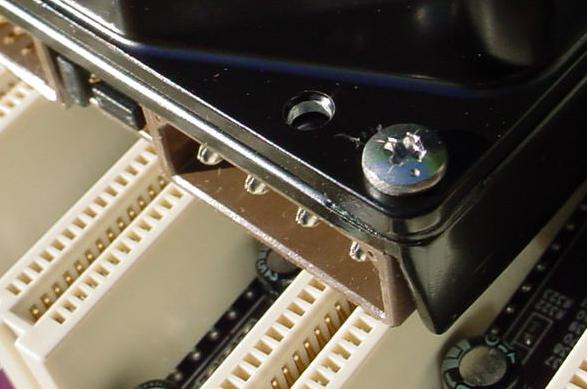
Samsung SpinPoint P20
Samsung announced their first 7200 RPM drive in 1999, but it was too little, too late and, so far as we know, it never made it into the distribution channel in quantity. Their second attempt at a 7200 was a different matter altogether. The SpinPoint P20 was readily available and competitive. After the outstanding performance of the Samsung 5400 RPM drives, we had hoped for a new leader in this model. Alas, while it had the faster spin rate and lower latency of a 7200 RPM drive, and maintained most of the traditional Samsung quietness, its seek mechanism was not as good as that of the Spinpoint 5400s and the overall performance was not a great deal faster.
Nevertheless, with only weak competition from the other 7200 RPM models, it still managed to beat all but one or two of them, and was very much among the leaders. Although it was only available here in the 40GB capacity, we rated it alongside the other leading IDE 7200 in this size range, the Western Digital WD400BB, because the Samsung seek time was slightly faster and it was marginally cheaper. In the end we sold them side by side, tending to use the Western Digital for performance-critical jobs and the Samsung for must-not-fail installations. Note that this is perhaps an over-fine distinction: the Caviar BBs are not failure-prone, and the P20 Spinpoints are not slow. Both are excellent drives.
| Performance | 1.47 | Reliability | AAA |
| Data rate | 473 Mbit/sec | Spin rate | 7200 RPM |
| Seek time | 9ms | Buffer | 2MB |
| Platter capacity | 20GB | Interface | ATA-100 |
| SP1001H | 10.2GB | 1 GMR head | |
| SP2002H | 20.4GB | 2 GMR heads | |
| SP3003H | 30.6GB | 3 GMR heads | |
| SP4004H | 40.8GB | 4 GMR heads | *** |
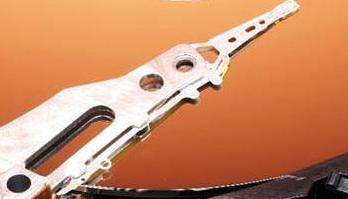
Western Caviar WD800BB Family
The darling of high-performance hard drive fans but a rather slow mover in this part of the world. Though it was released about mid-year we sold a bare handful of them. Up until the start of 2002, 60GB and 80GB drives were just too expensive for most people. Five years or so earlier there were people who would shell out for the largest available sizes but with the current "small" drives weighing in at 20 or 30GB, hardly anyone needed more, and most of the few who did need more bought a pair of 40GB drives instead, as this was cheaper.
The performance advantage of the 800BB was real but not enormous. The reality was, buyers were smart enough to take the money they saved on the hard drive and put it into RAM (which was going through its most spectacular low-price phase yet), or take advantage of the AMD Intel price war to pick up an XP or Thunderbird, or slip in a faster video card. It wasn't until the 60GB Caviar suddenly dropped to about $60 more than the 40GB version that it became a practical proposition, and even then the takeup was quite slow.
If we could pass one single message onto the hard drive manufacturers of the world, it would be this. In hard drives, size no longer sells. People have enough size already. Give us retailers a faster drive — significantly faster, none of this three percent at a time stuff — and we will sell them by the boxload. Until then, we retailers will keep on selling high-margin products alongside the bread and butter things, and the high-margin products we sell will all be CPUs and video cards. So long as the hard drive makers of the world are too timid to sink some development capital into a truly innovative high-speed drive for the mass market, IDE drives will remain a commodity product, and commodity markets mean low profits for the manufacturers. The technology has been available for years and is routine in SCSI drives. Until a drive manufacturer shows some courage, they won't show too much by way of profit either.
| Performance | 1.51 | Reliability | no data |
| Data rate | 525 Mbit/sec | Spin rate | 7200 RPM |
| Seek time | 8.9ms | Buffer | 2MB |
| Platter capacity | 27GB | Interface | ATA-100 |
| WD600BB | 60GB | 5 GMR heads | * |
| WD800BB | 80GB | 6 GMR heads | * |
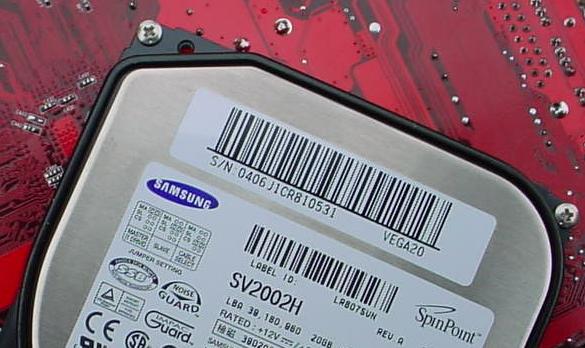
Samsung SpinPoint V30
Sometimes boring is good! These looked the same as the V2040, performed more-or-less the same, were just as quiet, and just as reliable. The size went up and the price went down, nothing else changed. This is the sort of boredom we love!
Notice the odd-ball sizing: with 30GB/platter you have a maximum of 15GB available per head. The cost to manufacture the 20GB version, in other words, was exactly the same as that of the 30GB unit! This artificial reduction of the capacity of the drive would have been unthinkable a few years ago. Now, with huge capacity attained so routinely, drive manufacturers can afford to waste some of it just to fit into a market niche.
| Performance | 1.37 | Reliability | AAA |
| Data rate | 402 Mbit/sec | Spin rate | 5400 RPM |
| Seek time | 8.8ms | Buffer | 512k |
| Platter capacity | 30GB | Interface | ATA-100 |
| SV2002H | 20GB | 2 GMR head | **** |
| SV3002H | 30GB | 2 GMR heads | ***** |
| SV4003H | 40GB | 3 GMR heads | *** |
| SV6004H | 60GB | 4 GMR heads |


